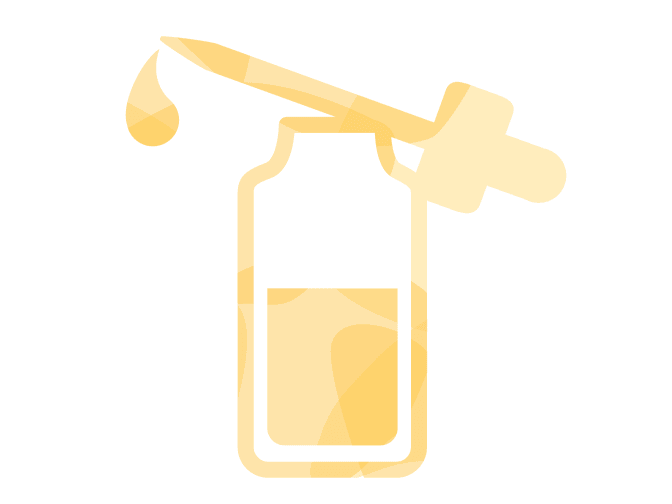
Is D5 bad for the environment?
Yes, D5 has been labeled as environmentally unfriendly due to the fact that it rinses off into the environment and doesn’t break down easily.


Last Updated: August 6, 2021
What is cyclopentasiloxane, which products have it, and is it safe to use? Get answers to all of your questions about D5 from the health experts at Grove.
You’ve seen all those cosmetic commercials that promise healthier, younger-looking skin and radiant hair about a million times. You know, the ones that claim they’ve found this never-heard-of-before secret that you simply have to try?
Cyclopentasiloxane might not exactly be an ingredient that’s been on your radar for years, but chances are, you’ve probably heard about it as it’s gained popularity recently.
Here, we’ll dispel all of the myths and facts about cyclopentasiloxane. Get answers to all of your questions about what the compound is, how it works, and whether it’s safe to use.

The name “cyclopentasiloxane” is crazy hard to say as is its other name “decamethylcyclopentasiloxane,” but the good news is that it’s also referred to as “D5.” Before we delve into the potential benefits and side effects of cyclopentasiloxane, knowing exactly what it is is helpful.
Cyclopentasiloxane is actually a type of silicone that’s regularly used in skincare and haircare products. It is specifically part of a small silicone group: cyclomethicones. According to clinical studies and reports, cyclomethicones have been deemed safe for cosmetic ingredient uses as they are not significantly absorbed through the skin.
However, as a silicone, they are not a natural ingredient, so if you only use natural on your face and skin, you may want to double-check the ingredients in your products.
This colorless, odorless compound is mainly used as an emollient to help smooth out beauty product creams and gels. It can also create a protective barrier on your skin once applied, which may help keep your skin safe from toxins, bacteria, germs, pollution, and other yuckiness.
It’s also commonly used in things like sealants, sunscreen, windshield coatings, medical implants, and antiperspirants. That’s a lot of things.
Curious about how to say “cyclopentasiloxane”? Check out this YouTube video for the correct pronunciation:
When applied, D5 has a silky and slippery texture that creates a protective barrier on the skin and hair. Cyclopentasiloxane in hair products may help prevent breakage, detangle, and reduce frizz.
Here are a few potential benefits of products containing D5:

Cyclopentasiloxane has no known side effects and is generally well-tolerated. As with any new product you try, though, it’s always a good idea to test it out on a small area of your skin before you take the plunge and apply it all over!
Since cyclopentasiloxane is easy to spread and leaves a nice feel on the skin, it is generally blended with heavier silicones or oils, so beware of hidden ingredients you may not want on your skin that come with D5.
Although there are no known health side effects to using products with D5, keep in mind that they might have a negative impact on the environment. Like other types of silicones, cyclopentasiloxane can take years to decompose.

Like other synthetic ingredients, cyclopentasiloxane has a bad reputation in the skin and haircare world because it’s not considered a natural ingredient. Even though we at Grove love a natural product, this compound’s bad reputation is somewhat of a misunderstanding.
As long as they’re safe to use, some artificial ingredients can be better for the environment since they’re not sourced from natural, plant, or animal resources. However, since D5 is a silicone, it does mean it won’t break down for a long time.
According to the National Library of Medicine, products that contain D5 as an ingredient are “safe in the present practices of use and concentration.” The agency also states that it’s not likely that using skincare or haircare products that contain cyclopentasiloxane would cause significant systemic exposure.

Yes, D5 has been labeled as environmentally unfriendly due to the fact that it rinses off into the environment and doesn’t break down easily.

It is safe for daily use, but the amount you use and how often you apply depends on the specific product you’re using. Using a more natural ingredient, like facial oil, is better for daily use than a non-natural product.
Always read the label for instructions before you apply products with D5.

Products with cyclopentasiloxane are suitable for most skin types.
If you have sensitive skin, be mindful of other ingredients in the product that could cause irritation such as dyes or fragrances.
It works great with heavier silicones or oils because the compound makes them easier to spread.
What shouldn’t you use cyclopentasiloxane with? D5 actually works well with most—if not all—types of ingredients. The only problem is it is non-natural so if you tend to pick mostly natural products, anything with D5 may not be for you.
Whether you know it or not, you probably already use several products that contain cyclopentasiloxane.
Here are 6 examples of top products that may contain D5:

Wondering who Grove is, what types of products we offer, and how to get a free gift set when you sign up? Learn more about flexible monthly shipments, customizing your shipment, and joining millions of happy households — no monthly fees or commitments required.
GROVE TIP
There are different types of silicones used in different products, and they go by D4, D5, and D6. So what’s the difference?
D4 is also known as cyclotetrasiloxane and it is now recognized as toxic to human reproductive systems due to the fact that it is a hormone disruptor.
D5 is also known as cyclopentasiloxane, which is safe for humans but damaging to the environment.
D6 is also known as cyclohexasiloxane and is mainly used in products that you leave on your skin or hair. When used in sunscreen, D6 has been found to harm aquatic life when it rinses off in the oceans.
Botanical oils, like olive oil, squalane oil, and sunflower oil, and waxes, like beeswax, can be used as more natural alternatives to cyclopentasiloxane and silicones in beauty products.
However, these alternatives may not be good for sensitive skin types as they are a bit heavier and do soak into the skin, unlike D5.
Many companies are innovating new and improved non-silicone alternatives to D4, D5, and D6 to use in skincare, suncare, and beauty products in general. Keep a lookout for these ingredients and do your research to see if they are right for you.

Read this real review of making the switch to see how natural mineral sunscreen works.

Separate the good from the bad in our clean ingredients breakdown.

Learn about the difference between non-chlorine and chlorine bleach from our Senior Director of Science Formulation.

This guide breaks down the top terms to know and sunscreen ingredients to avoid.